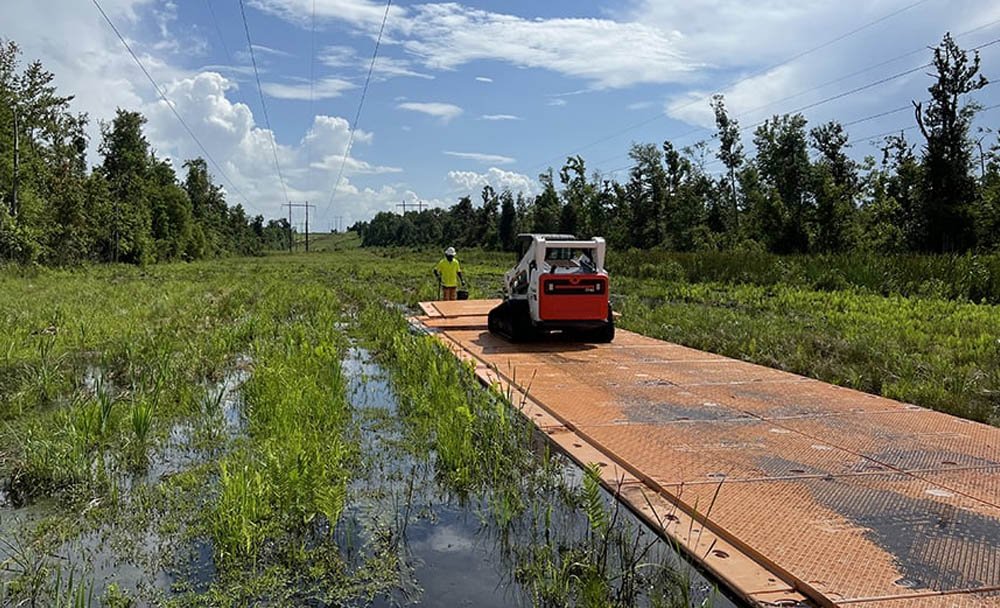Worker safety stands first in every construction project, with risks minimized when ground conditions remain secure. A stable surface ensures smooth operations, preventing unnecessary accidents, delays, and costly damage to valuable machinery. However, a partnership with trusted suppliers ensures reliable access to quality materials that run projects efficiently. Professional solutions guarantee safer work sites, improved project outcomes, and reduced stress for contractors and teams.
Construction mats provide critical support across wetlands and soft soils where heavy equipment otherwise struggles. They create dependable access, preserve sensitive ecosystems, and save time with simple construction solutions. For contractors and project managers, dependable surfaces answer the need for efficiency, safety, and compliance. This article highlights why durable platforms matter most in wetlands and soft soils, offering practical insight.
Give Heavy Gear A Solid Footing
Heavy equipment rests poorly on soft soils without firm base support from access mats over wetlands. Mats distribute weight broadly so cranes, dozers, and trucks avoid sinking, tilting, or becoming unsafe on swampy ground. When platforms are placed under gear, project managers protect wheels, tracks, and machinery components from damage. That foundation allows crews to move machines confidently rather than struggle against mud, water, or soft earth.
Platforms act as temporary roads or platforms that enable access where natural ground fails to carry loads safely. Workers feel relieved knowing the ground beneath the mats bears equipment weight evenly. Reduced chance of getting stuck saves time, prevents delays, and avoids risks tied to rescue or repair tasks. Heavy gear stays operational longer, maintenance charges drop, and schedules stay realistic rather than slipping behind critical deadlines.
Shield Soil Structure And Roots
Wetlands usually contain fragile soil layers and root networks, which construction operations can easily harm. Durable options protect those layers and prevent direct pressure, compaction, or tearing from tracks or wheels above. Roots stay healthy when mats preserve air gaps and prevent soil collapse that starves those roots of oxygen. Soil organisms responsible for water filtration and nutrient cycles remain undisturbed because platforms reduce physical stress on ground layers.
Protection of soil structure matters for wetland recovery after construction ends, rather than permanent damage that prevents regeneration. Vegetation returns faster once machinery leaves because the soil stays porous, fertile, responsive, and not compacted. Local plant growth stays robust, erosion is less likely, and habitat value remains higher at project conclusion than otherwise. Communities depend on wetlands for flood control, biodiversity, and water quality, so preserved roots benefit everyone.
Prevent Erosion And Soil Loss
Soft soils in wetlands erode easily when disturbed by machinery, water flow, or wind without protection. Ground protection mats offer surface cover that holds soil in place, preventing displacement under tracks. Mats create a barrier between moving equipment and the soil surface so particles cannot scatter easily across wetland boundaries. Such protection helps maintain water clarity and prevents sediment-filled runoff from harming aquatic life near the construction area.
Over time, cumulative soil loss undermines ground stability, weakens wetland function, and increases operational costs. When mats reduce erosion early, landscape scars shrink, fewer resources shift to rework, replenish topsoil, or restore plant cover. Contractors gain goodwill from regulators and the community when projects leave minimal soil damage rather than scars and gullies. Smooth soil surfaces also support safe walking for crews and a better appearance when the project is completed.
Limit Contamination Risk
Equipment sometimes leaks oil, diesel, and hydraulic fluid, which soaks up water, carries, and wildlife suffer severe consequences. Mats under machines act like a shield to prevent fluids from directly hitting the soil. Any spill that happens lands upon a mat surface, where cleanup is easier. This buffer helps maintain the purity of groundwater and surface water and protects plants.
The mat material selection also matters because some materials resist absorption of dangerous chemicals and degrade less under exposure. Reusable options built from composite or treated timber materials avoid long-term breakdown. These products help comply with environmental rules that require the minimization of pollutants. Project participants feel pride when work remains clean and safe, rather than environmentally harmful.
Speed Up Work And Reduce Cost
When the ground fails to support equipment, simple tasks slow dramatically as crews wrestle with mud. Composite platforms reduce such delays because gear moves smoothly above soft ground. Workers spend less time on haul of fill material, crude road construction, or water pump tasks, rather than primary project tasks. That saves labor hours, reduces risk of damage, simplifies logistics, and keeps deadlines reachable.
Cost reductions appear through fewer repairs, less site restoration, and reduced fill. Reusable options provide long-term value because the same mats serve multiple sites. Lower mitigation fees and fewer permit delays save money, since regulators sometimes demand costly restoration. In all, these platforms help projects stay on budget without sacrificing safety, quality, or ecosystem health.
Durable construction mats open opportunities for safer projects and protect delicate landscapes from unnecessary harm. Reliable suppliers provide consistent quality that supports both immediate performance and long-term value across demanding environments. Trusted partners ensure contractors have smoother operations, fewer setbacks, and higher confidence across each project stage. So, take the step today and connect with experts to secure durable platforms for future success.



